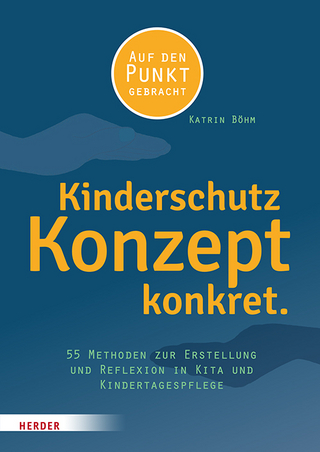
The ESL/ELL Teacher′s Survival Guide – Ready–to–Use Strategies, Tools, and Activities for Teaching English Language Learners of All Levels
John Wiley & Sons Inc (Verlag)
978-1-118-09567-6 (ISBN)
- Titel erscheint in neuer Auflage
- Artikel merken
A much-needed resource for teaching English to all learners The number of English language learners in U.S. schools is projected to grow to twenty-five percent by 2025. Most teachers have English learners in their classrooms, from kindergarten through college. The ESL/ELL Teacher?s Survival Guide offers educators practical strategies for setting up an ESL-friendly classroom, motivating and interacting with students, communicating with parents of English learners, and navigating the challenges inherent in teaching ESL students. * Provides research-based instructional techniques which have proven effective with English learners at all proficiency levels * Offers thematic units complete with reproducible forms and worksheets, sample lesson plans, and sample student assignments * The book?s ESL lessons connect to core standards and technology applications This hands-on resource will give all teachers at all levels the information they need to be effective ESL instructors.
LARRY FERLAZZO is the author of "Larry Ferlazzo's Websites of the Day" (http://larryferlazzo.edublogs.org), the popular blog for teachers of English Language Learners and one of the most popular education blogs for all teachers. He teaches English at Luther Burbank High School in Sacramento, California. KATIE HULL SYPNIESKI teaches English at Luther Burbank High School in Sacramento, California, serves as a teaching consultant with the Area 3 Writing Project at University of California, Davis, and is a lead trainer for the WRITE Institute (Writing Reform Institute for Teaching Excellence).
About the Authors v Acknowledgments xi Introduction xiii Bonus Web Content xiv PART ONE: GETTING STARTED WITH ENGLISH LANGUAGE LEARNERS 1 1. ESL Instruction: The Big Picture 3 Some Facts About the ELL Population 5 A Primer on ESL Research 7 A Quick Tour of ESL Best Practices 10 2. ESL Classroom Basics: Building a Positive and Effective Learning Environment 13 The First R: Building Relationships 14 The Second R: Resources in the ESL Classroom 26 The Third R: Establishing Routines 32 PART TWO: TEACHING BEGINNING ENGLISH LANGUAGE LEARNERS 37 3. Key Elements of a Curriculum for Beginning ELLs 39 Key Elements of a Curriculum 4. Daily Instruction for Beginning ELLs 71 Reflection 71 Homework 74 Field Trips 82 Assessment 83 PictureWord Inductive Model Unit Plan 85 A SampleWeek in a Two-Period Beginning ESL Class 88 Year-Long Schedule 92 Other Activities 113 PART THREE: TEACHING INTERMEDIATE ENGLISH LANGUAGE LEARNERS 121 5. Key Elements of a Curriculum for Intermediate ELLs 123 Key Elements of a Curriculum 124 6. Daily Instruction for Intermediate ELLs 149 Reflection 149 Homework 150 Field Trips 150 Assessment 153 A Sample Unit: Problem-Solution 153 A SampleWeek in a Two-Period Intermediate ESL Class 180 Inductive Lesson Plan 184 Using Text to Generate AnalyticalWriting Lesson Plan 191 Other Activities 198 PART FOUR: TEACHING ENGLISH LANGUAGE LEARNERS IN THE CONTENT AREAS 203 7. English Language Learners in the Mainstream Classroom 205 What Is the Organizing Cycle? 206 8. Teaching Social Studies 215 Building Relationships with Students 215 9. Teaching Science 223 One Size Does Not Fit All 223 Building Relationships with Students and Accessing Prior Knowledge 224 Identifying and Mentoring Students Leadership Potential 225 Learning by Doing 227 Reflection 227 An Important Final Note 228 10. Teaching Math 229 Making Math Relevant 229 Building Relationships with Students and Accessing Prior Knowledge 230 Identifying and Mentoring Students Leadership Potential and Learning by Doing 232 Reflection 235 PART FIVE: FURTHER STRATEGIES TO ENSURE SUCCESS 237 11. Using Learning Games in the ESL Classroom 239 Research Support 240 What Are the Qualities of a Good Learning Game? 240 12. Handling Potential Challenges 249 Student Motivation 250 The Advantages of Being Bilingual orMultilingual Lesson Plan 251 The Qualities of a Successful Language Learner Lesson Plan 257 Textbook Integration 264 Error Correction 265 Limited Access to Educational Technology 266 Multilevel Classes 267 Primary Language Use in the ESL Classroom 270 Classroom Management 271 Book Selection 272 13. Assessing English Language Learners 275 Assessing ELLs: Key Principles 276 Afterword 291 Notes 293 Index 313
| Erscheint lt. Verlag | 4.9.2012 |
|---|---|
| Verlagsort | New York |
| Sprache | englisch |
| Maße | 225 x 283 mm |
| Gewicht | 724 g |
| Themenwelt | Schulbuch / Wörterbuch |
| Sozialwissenschaften ► Pädagogik ► Schulpädagogik / Grundschule | |
| ISBN-10 | 1-118-09567-7 / 1118095677 |
| ISBN-13 | 978-1-118-09567-6 / 9781118095676 |
| Zustand | Neuware |
| Informationen gemäß Produktsicherheitsverordnung (GPSR) | |
| Haben Sie eine Frage zum Produkt? |
aus dem Bereich



